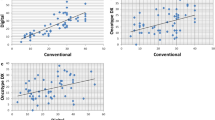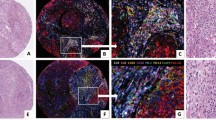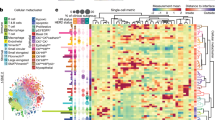Abstract
This study was aimed at determining whether tumour DNA content measured by cell image analysis could provide additional prognostic information when compared to that provided by flow cytometry. Sections cut from paraffin blocks of tumours from 101 patients with node negative breast cancer were analysed by both methods and the results related to other prognostic variables and to patient relapse and overall survival. DNA ploidy measured by flow cytometry classified 46 tumours as diploid and 55 as aneuploid, whereas by cell image analysis 30 were diploid and 71 aneuploid (P less than 0.002). There were 20 tumours with discrepancies between the two methods; 18 of these were tumours with only one peak in flow analysis, but determined to be aneuploid with image analysis. DNA content as measured by both methods was significant for predicting relapse and survival by log-rank test, as were tumour histological grade, c-erbB-2 expression and tumour size. Multivariate analysis showed DNA ploidy measured by flow cytometry to be the only variable of independent significance (P less than 0.02) for both relapse and overall survival. Compared with cell image analysis, flow cytometry demonstrated a significantly higher proportion of diploid tumours, which may be related to differences in the internal standards applied to each method. We suggest that cell image analysis techniques can provide more sensitive information on the DNA content of tumour cells by direct measurement of nuclear DNA density of both normal lymphocytes and tumour cells in the same section. However, although image analysis appears to be more sensitive than flow cytometry in detecting DNA aneuploidy, the image technique appears to lack the specificity of flow cytometry in correlation with clinical outcome.
This is a preview of subscription content, access via your institution
Access options
Subscribe to this journal
Receive 24 print issues and online access
$259.00 per year
only $10.79 per issue
Buy this article
- Purchase on Springer Link
- Instant access to full article PDF
Prices may be subject to local taxes which are calculated during checkout
Similar content being viewed by others
Author information
Authors and Affiliations
Rights and permissions
About this article
Cite this article
Yuan, J., Hennessy, C., Givan, A. et al. Predicting outcome for patients with node negative breast cancer: a comparative study of the value of flow cytometry and cell image analysis for determination of DNA ploidy. Br J Cancer 65, 461–465 (1992). https://doi.org/10.1038/bjc.1992.93
Issue Date:
DOI: https://doi.org/10.1038/bjc.1992.93
This article is cited by
-
Improved prognostication in small (pT1) breast cancers by image cytometry
Breast Cancer Research and Treatment (1995)



